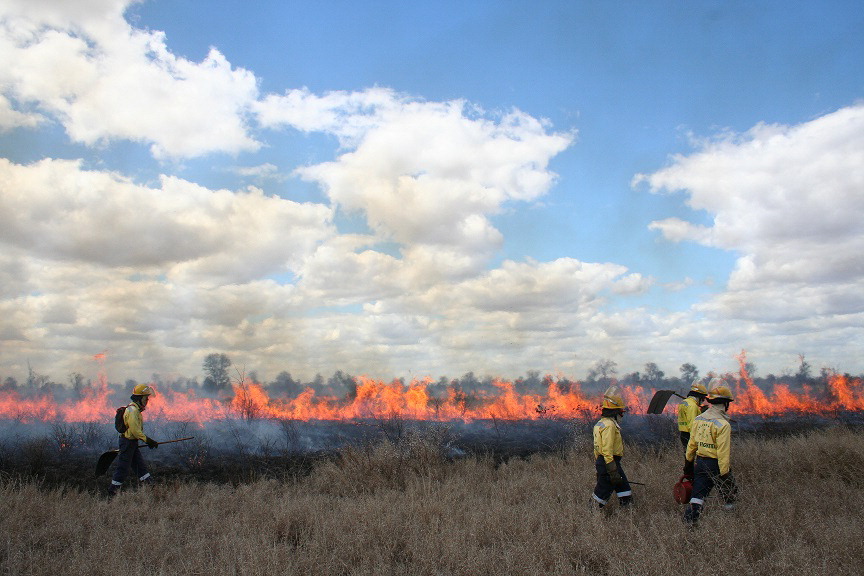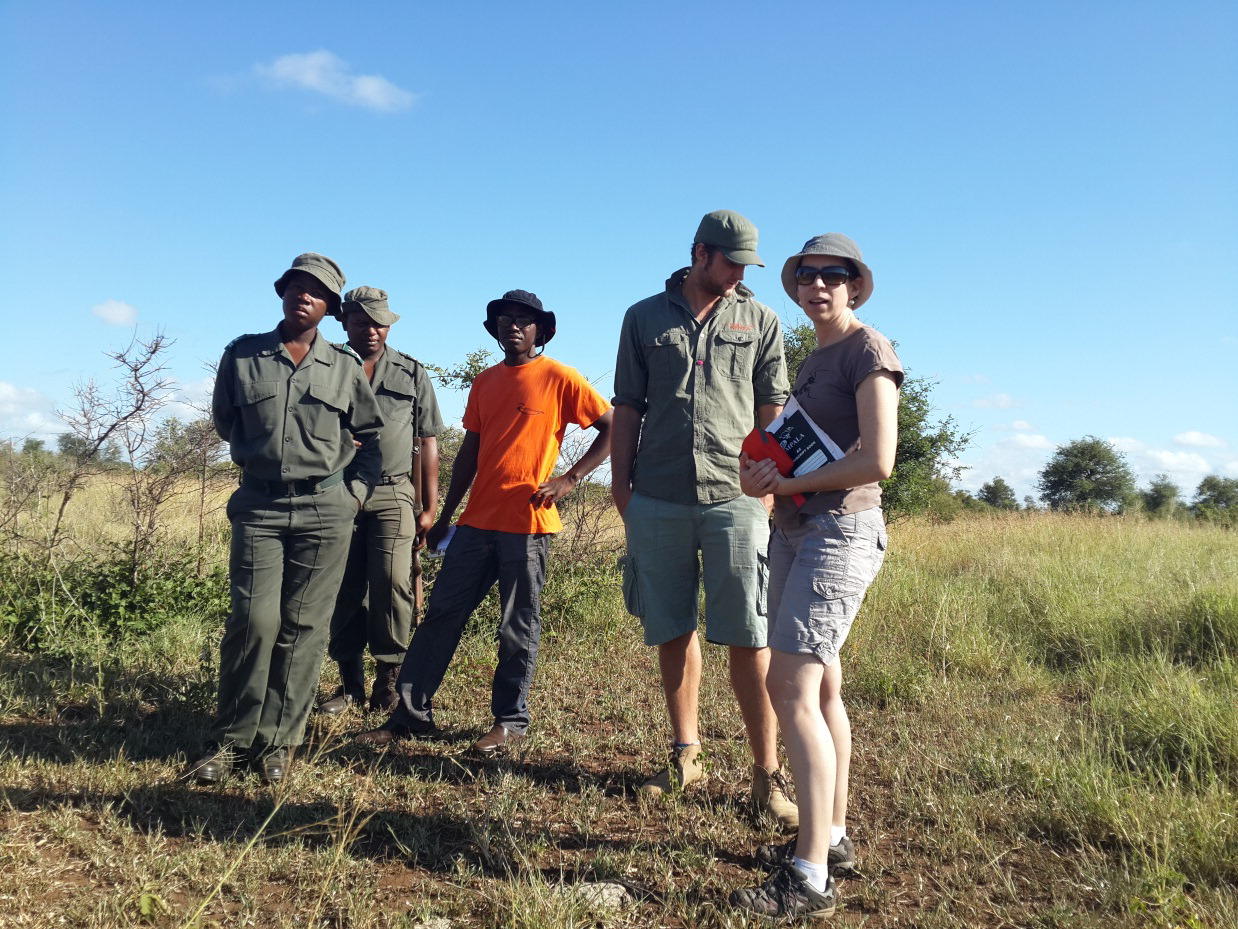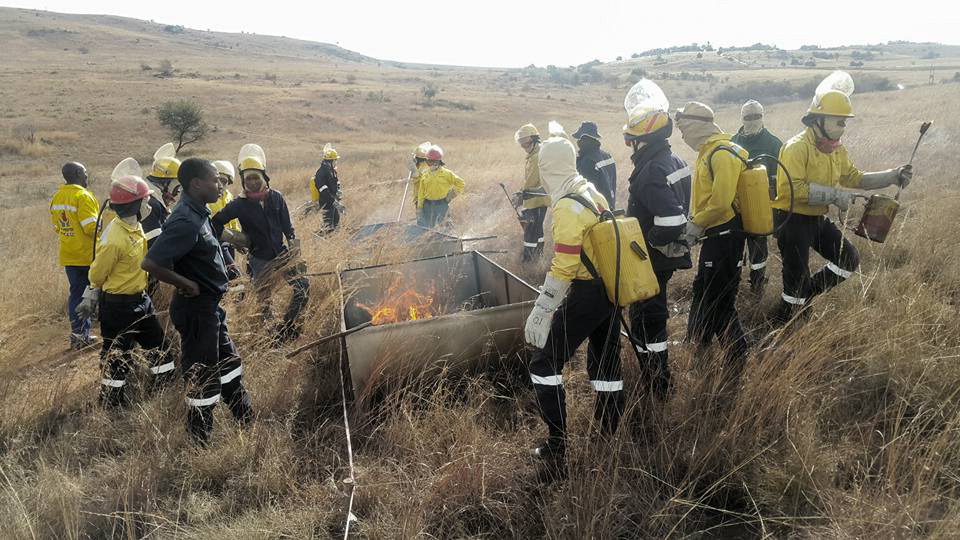|
Cycle 3 (2014 Deadline) Managing fire and grazing to maximize carrying capacity in African rangelands U.S. Partner: Todd M. Anderson, Wake Forest University
Project Dates: September 2014 to April 2017 Fire and herbivory are key ecological and evolutionary processes shaping savanna landscapes. While fire is more prevalent in high-rainfall savannas, and herbivory in low-rainfall savannas, over much of the rainfall gradient both of these two disturbances are present. How these two consumers interact to create and maintain savanna heterogeneity across rainfall gradients is not well understood. Fire cannot spread in short-grazed grassland, but details of how this works in a spatio-temporal context are unclear. Alternative systems representing either heavily grazed or frequently burnt habitats can occur in savanna landscapes depending on the mix of fire and herbivory, and the extent of these system states can be altered by fire and grazing. Using manipulative field experiments and regional-scale analyses, this research project will address the following questions: (1) How easy is it to manipulate the proportion of short grass: tall grass habitat in an ecosystem? (2) How applicable can these results be across rainfall gradients and in terms of the types of herbivores present? (3) What is the appropriate ratio of short-grass and tall-grass habitat? This project addresses USAID’s development goals by promoting agricultural productivity and biodiversity. Research on livestock production methods from other ecosystems is not always appropriate in Africa. Land owners have different goals in terms of quantity versus quality of livestock, and these systems have a unique ecology. Current development issues in African rangelands relate to different management objectives of commercial, communal, and conservation land users, as well as to changes in the ways that rangelands are being used and managed, in particular, a shift from cattle to wildlife, and the issue of fencing parks in East Africa. The project will aim to determine whether it is possible to apply fire in a way that increases the proportion of grazing-lawn habitat, and will also develop fire management guidelines for maximizing carrying capacity in different rangeland contexts – communally and commercially owned ecosystems, wildlife farms and cattle farms, as well as conservation areas. The research project will be identifying workable fire management options and will be testing their applicability across a range of environmental conditions. The applicability of fire-grazing management has been demonstrated by the U.S. collaborators, who have developed similar approaches to improve rangeland condition and biodiversity. African ecosystems are different for a number of reasons, but the success in U.S. prairies demonstrates the impact this research can have on agricultural practices in Africa.  |  | | A late season burn (photo courtesy of Dr. Archibald). | The project team in Teamona (photo courtesy of Dr. Archibald) |
Final Summary of Project Activities
This project had three main objectives:
- Determine whether concentrated short-grass grazing patches could be created through careful application of fire and use of pyric-herbivory.
- Assess the value of these short-grass patches to different grazing animals (including livestock) and and overall biodiversity in terms of NPP
- Explore how prevalent these short-grass grazing systems are across different parts of tropical Africa and along gradients of rainfall and soil fertility.
The project achieved all three of these aims. The team demonstrated that it is possible to create patches in two very different ecosystems through the application of small repeated fires and saw massive responses of wildebeest and other short-grass species to these patches, and have observed changes in grass, wildflower, and insect communities with the spread of these patches (i.e. increased beta-diversity). The team have yet to finalize the role of these patches in livestock systems but it is clear that in communal rangelands, most cattle depend on these for their growing season forage and that commercial farmers are becoming interested in creating such habitats on their farms.
With the help of their US collaborator, this project produced a unique dataset of grazing lawn occurrence across south and east Africa which has so far given unexpected results (eg. the expected relationship with soil fertility was not apparent). The PI and her team collected data from more than 40 sites across South and East Africa and ran a regional analysis of fire-grazer interactions, as well as developed and published a conceptual model on this.
Through the PEER project, the team developed a memorandum of understanding with the “Herding for Health” program run by the University of Pretoria in the Welverdiend communal rangeland near the Kruger National Park and they will be collaborating on implementing their ideas in these rangelands. The PI and her team will continue to build their relationship with Working on Fire (part of the South African Government’s expanded public works job creation program). They will apply all of their experimental burns and advise them on the research application of their work. The team also presented their work at two international conferences (Ecological Society of America and the Association for Tropical Biology Conservation), and have published numerous articles in scientific journals and the media.
The team's work received international recognition with colleagues from Texas A&M interested in setting up similar experiment in their ecosystems and collaborating on the socio-economic aspects. It has also received recognition from the South African National Parks who have altered their fire management plans based on their results. They are working with both commercial and communal farmers to explore the implications of their ideas in livestock areas.
The PI will continue to carry out this research project. The team is currently working on the cattle-wildlife comparison through a grant from the Global Change Grand Challenge and will be engaging communal and commercial farmers to assess the impacts of grazing lawn habitat for their livestock. They also have funding from the South African National Parks to continue monitoring the effects of the drought on their experimental site in the Kruger National Park, which will give them a much broader insight into the value of these short-grass ecosystems in relation to the natural variability of semi-arid grazing systems (all indications so far are that the history of grazing has a big impact on the trajectory of recovery after a drought event). Lastly, the team has funding from the Royal Society Newton Grant to expand their assessment of the distribution of these grazing-lawn systems across environmental gradients, their evolutionary history, and their role in increasing resilience of African ecosystems to human activities (livestock) and climate change.
PublicationsArchibald, S., Beckett, H., Bond, W.J., Ceotsee, C., Druce, D.J., Staver, A.C., 2017. Interactions between Fire and Ecosystem Processes. Conserving Africa’s mega-diversity in the Anthropocene: the Hluhluwe iMfolozi Park Story pp233. Cromsigt, J.P.G.M., Archibald, S. and Owen-Smith, N. (eds.) (2017) Conserving Africa’s Mega-Diversity in the Anthropocene: The Hluhluwe-iMfolozi Park Story. Cambridge: Cambridge University Press (Ecology, Biodiversity and Conservation). https://doi.org/10.1017/9781139382793
Donaldson JE, Archibald S, Govender N, Pollard D, Luhdo Z, Parr CL. Ecological engineering through fire-herbivory feedbacks drives the formation of savanna grazing lawns. J Appl Ecol. 2018; 55: 225–235. https://doi.org/10.1111/1365-2664.12956
Hempson, G.P., Parr, C.L., Archibald, S., Anderson, T.M., Mustaphi, C.J.C., Dobson, A.P., Donaldson, J.E., Morrison, T.A., Probert, J. and Beale, C.M. (2018), Continent-level drivers of African pyrodiversity. Ecography, 41: 889-899. https://doi.org/10.1111/ecog.03109
 | | The PI, Dr. Archibald and her team working on burning . (Photo courtesy of Dr. Archibald) |
PEER Cycle 3 Grant Recipients
|
|
|
|






